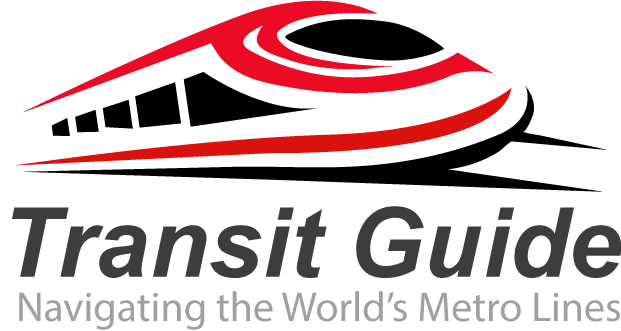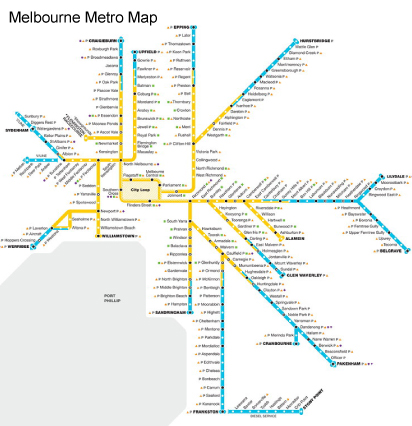Melbourne’s comprehensive metro system is one of Australia’s most extensive urban rail networks, serving millions of passengers annually across the greater Melbourne metropolitan area. Whether you’re a tourist exploring the city or a resident navigating daily commutes, understanding Melbourne’s public transport system is essential for efficient travel throughout this vibrant metropolis.
What is the Melbourne Metro System?
The Melbourne Metro system encompasses multiple transport modes operated by Metro Trains Melbourne, including suburban trains, trams, and buses. The network consists of 16 train lines connecting Melbourne’s Central Business District (CBD) to outer suburbs, covering over 998 kilometers of track with 222 stations. This extensive network makes Melbourne’s public transport system the largest in Australia and one of the most comprehensive in the Southern Hemisphere.
Key Features of Melbourne’s Train Network
Major Train Lines and Coverage
Melbourne’s train network includes popular lines such as:
- Belgrave and Lilydale Lines: Connecting eastern suburbs through the Dandenong Ranges
- Craigieburn Line: Serving northern suburbs with connections to Melbourne Airport via SkyBus
- Frankston Line: Running along the Mornington Peninsula
- Pakenham and Cranbourne Lines: Major southeastern corridors
- Sandringham Line: Serving bayside suburbs
City Loop and Central Stations
The heart of Melbourne’s metro system is the City Loop, an underground circuit connecting five CBD stations: Flinders Street, Southern Cross, Flagstaff, Melbourne Central, and Parliament. These stations provide seamless connections between different lines and easy access to Melbourne’s shopping, business, and entertainment districts.
How to Use Melbourne Metro Transport
Myki Card System
All Melbourne public transport operates on the Myki ticketing system. This reusable smart card works across trains, trams, and buses throughout Melbourne and regional Victoria. Travelers can purchase Myki cards at:
- Station machines and staffed booking offices
- Authorized retailers including 7-Eleven stores
- Online through the official PTV (Public Transport Victoria) website
- Melbourne Airport and major tourist locations
Operating Hours and Frequency
Melbourne trains typically operate from 5:00 AM until midnight on weekdays, with extended hours until approximately 1:30 AM on Friday and Saturday nights. During peak hours (7:00-9:00 AM and 5:00-7:00 PM), most lines run every 10-20 minutes, while off-peak services generally operate every 20-40 minutes.
Benefits of Using Melbourne’s Metro System
Cost-Effective Transportation
Melbourne’s public transport offers excellent value compared to taxi services or car parking in the CBD. Daily and weekly Myki caps ensure passengers never pay more than the maximum daily or weekly fare, regardless of how many trips they take.
Environmental Sustainability
Choosing Melbourne’s metro system significantly reduces carbon emissions compared to private vehicle use. The network plays a crucial role in Melbourne’s commitment to becoming carbon neutral and reducing urban congestion.
Accessibility Features
Modern Melbourne trains feature wheelchair accessibility, priority seating, audio announcements, and visual displays. Many stations include lifts, ramps, and tactile indicators to assist passengers with disabilities.
Tips for Navigating Melbourne Metro
Planning Your Journey
Use the official PTV Mobile app or Google Maps for real-time journey planning, service updates, and disruption information. These tools provide accurate arrival times and suggest optimal routes for your destination.
Peak Hour Considerations
Avoid traveling during peak hours when possible, as trains can become crowded. If you must travel during peak times, allow extra time for your journey and consider alternative routes through the City Loop.
Safety and Security
Melbourne’s metro system maintains high safety standards with CCTV surveillance, emergency help points, and regular security patrols. Protective Services Officers patrol stations during evening hours and weekends.
Connecting to Other Transport Options
The Melbourne metro system integrates seamlessly with:
- Tram Network: The world’s largest tram system with over 250 kilometers of track
- Bus Services: Connecting areas not served by trains or trams
- V/Line Regional Services: For travel to regional Victoria destinations
- SkyBus: Direct airport connections from Southern Cross Station
Future Developments
Melbourne continues expanding its metro network through major infrastructure projects like the Metro Tunnel, which will create additional CBD capacity and new underground stations. These developments will further enhance connectivity and reduce travel times across the metropolitan area.
Conclusion
Melbourne’s metro system offers residents and visitors an efficient, affordable, and environmentally friendly way to explore Australia’s cultural capital. With comprehensive coverage, integrated ticketing, and continuous improvements, the network remains central to Melbourne’s reputation as one of the world’s most liveable cities. Whether you’re commuting to work, exploring attractions, or heading to sporting events, Melbourne’s metro system provides reliable transportation throughout this dynamic metropolitan area.

